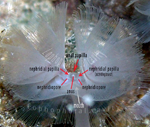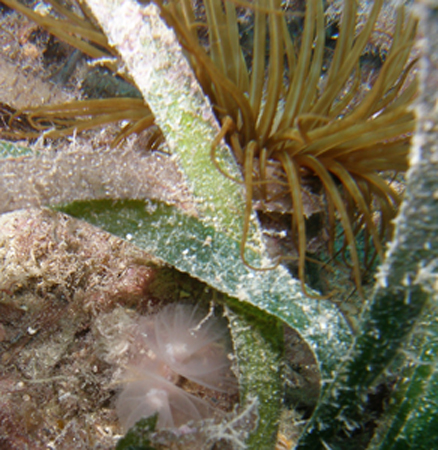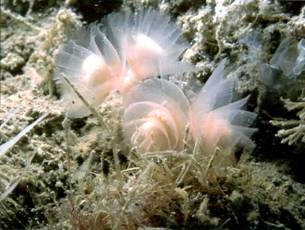| Synonyms: Phoronis buskii McIntosh, 1888 Phoronis bhadurii Ganguly & Majumdar, 1967 |
|

° References of the most recent published diagnoses
Pictures of Phoronis australis
| ||||||
| Diagnosis | ||||||
|
Last update: March 10, 2023
Extended specimens up to 200 mm, diameter 2-5 mm. Two giant nerve fibres, one on the left (diameter: 5-13 µm) and one on the right (3-13 µm) occuring at the attachment of the lateral mesenteries to the body wall. Longitudinal muscle bundles of bushy type; the mean formula and general formula are respectively:
Sexual reproduction: hermaphroditic; embryos brooded in two masses on a mucous cord secreted by the nidamental glands of B type (i.e. restricted to the floor of the lophophoral concavity with an extension along the coils of the lophophore on the inner surface of the tentacles); lophophoral organs small. Asexual reproduction by transverse fission. Phoronis australis is burrowing in tube-wall of Cerianthids, generally of the genus Cerianthus, from the intertidal zone to abut 40 m depth. The behaviour between both species has been studied by Emig et al. (1972); the association with the cerianthid has been defined as an inquilism based on their relationships : substrate, nutrition and protection. The number of phoronids in a tube-wall may reach 100, in general 20-50 individuals.
Phoronis australis: the distribution is represented below on the map. Type-locality: Port Jackson, Sydney (Australia) Last update: January 16, 2018 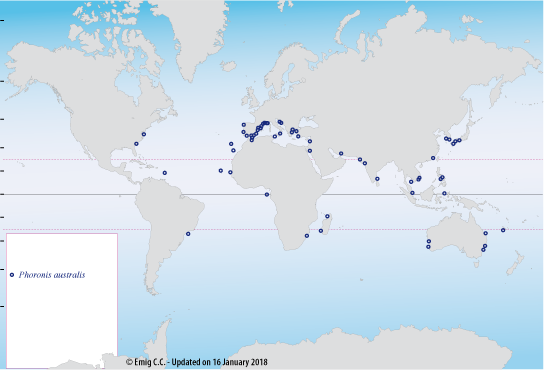 |

|
Kim I. & Huys R., 2012. Sabelliphilidae (Copepoda: Cyclopoida) associated with the tube anemone Pachycerianthus maua (Carlgren) and the horseshoe worm Phoronis australis Haswell off New Caledonia. Systematic Parasitology, 83 (1), 51-64. Stampar S. N., Emig C. C., Morandini A. C., Kodja G., Balboni A. P. & F. Lang Da Silveira, 2010. Is there any risk in a symbiotic species associating with an endangered one? A case of a phoronid worm growing on a Ceriantheomorphe tube. Cah. Biol. Mar., 51 (2), 205-211. Templado J., Calvo M., Moreno D., Flores A., Conde F., Abad R., Rubio J., López-Fé C. M. & M. Ortiz, 2006. Flora y Fauna de la reserva marina y reserva de pesca de la Isla de Alborán. Ministerio de Agricultura, Pesca y Alimentación, Secretaría General de Pesca Marítima, Madrid, 269 pp. Emig C. C., Çinar M. E. & Z. Ergen, 2003. Phoronida from the Eastern Mediterranean and Black Sea. Cahiers de Biologie Marine, 44 (2), 185-190. Wirtz P., 2003. New records of marine invertebrates from Saõ Tomé Island (Gulf of Guinea). J. Mar. Biol. Ass.U.K., 83 (4), 735-736. Emig C. C., Roldán & J. M. Viéitez, 2001. Phoronida. In: European Register of Marine Species, a check list of the marine species in Europe and a bibliography of guides to their identification, Costello M. J., Emblow C. & R. White (eds). Patrimoines Naturels, 50, 324-325. Wirtz P., 2001. New records of marine invertebrates from the Cape Verde Islands. Arquipélago. Life and Marine Sciences, 18A, 81-84. To download an PDF reprint > click here. Emig C. C., Roldán C. & J. M. Viéitez, 2000. Foronídeos del litoral luso-español. Phoronida from the Luso-Iberian zone. Boletín de la Real Sociedad Española de Historia Natural (Sec. Biol.), 96 (1-2), 77-83. References on Phoronis australis |
|
Dr. Peter Wirtz, PO Box 103, P - 9125 Canico, Madeira (Portugal)...
Fig. 2. Phoronis australis in Sesimbra near Lisbon (Portugal). Copyright Peter Wirtz 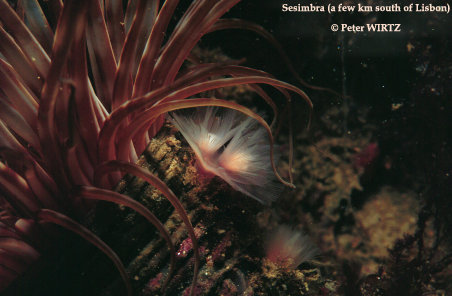
Fig. 3. Phoronis australis in Lagoa Azul (São Tomé Island), northwest coast, 8 m depth, on large black cerianthid. Copyright Peter Wirtz 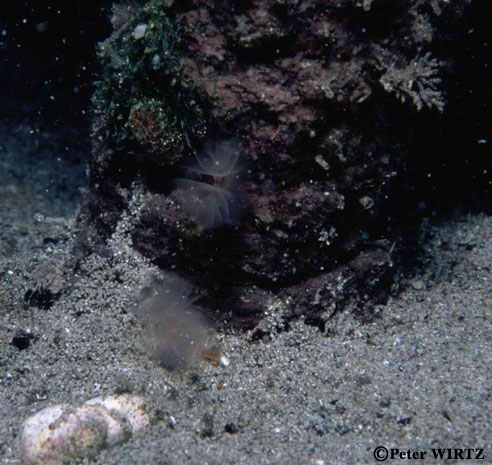
Fig. 4. Phoronis australis in a (Pachy)Cerianthus at Madeira Island , in front of Caniço, at 25 m depth. Copyright Peter Wirtz
Fig. 5a. Phoronis australis in a Cerianthus, SW coast of Fulija islet, near Iz Is. (Croatia), at 20 m depth. Copyright Hrvoje Cizmek
Fig. 5b. Phoronis australis in a Cerianthus, near Trogir (Croatia), at 3 m depth. 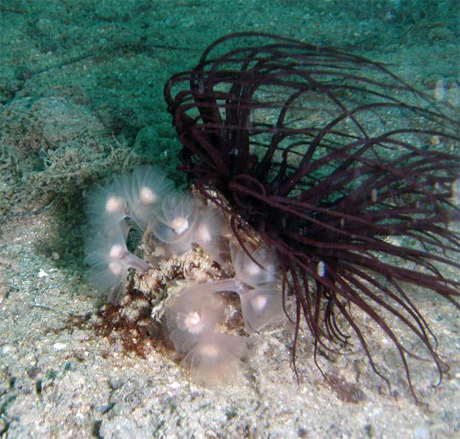
Fig. 6. Phoronis australis in a tube of Cerianthus near Almeria (Spain). Copyright J. M. Vieitez
...and more...
|
